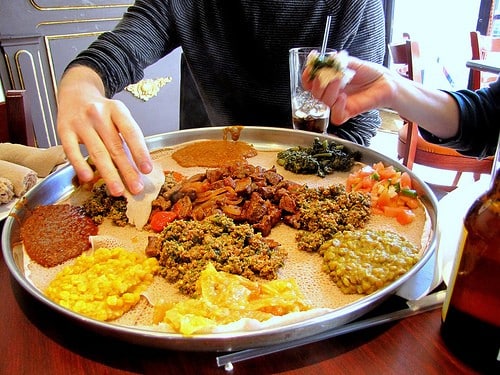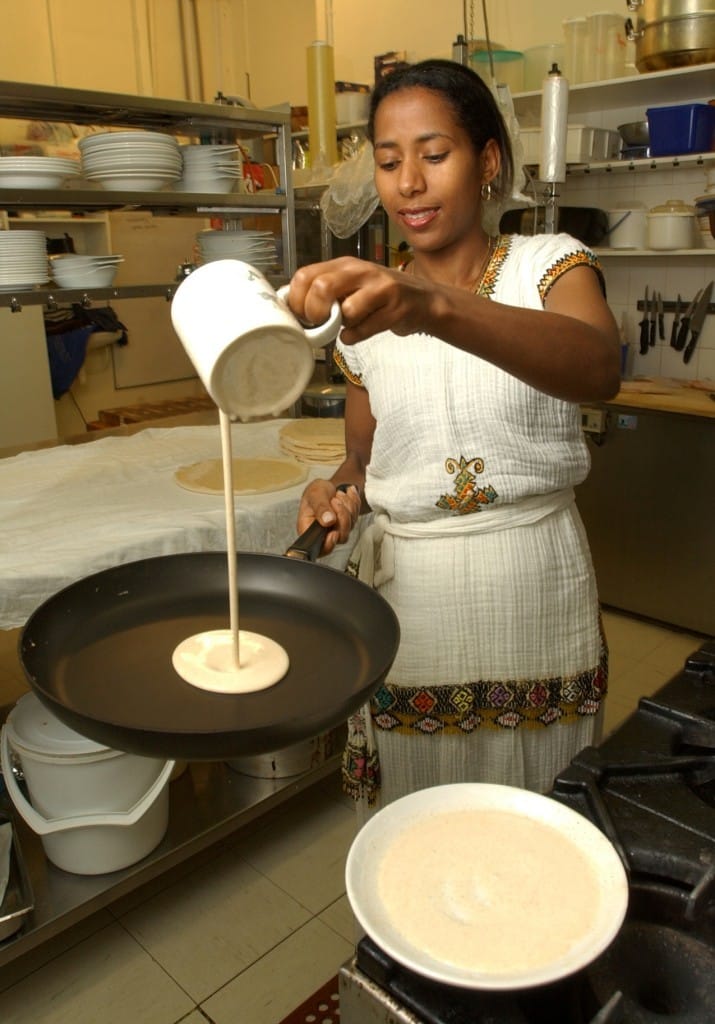If you’re ever in the mood to get your taste buds tingling, take a stroll to your nearest Ethiopian community. Chances are there at least a few Ethiopian restaurants in your nearby area. Once you discover your local hotspot, you may even be invited to join a table to share a meal because Ethiopians are known for their kindness and hospitality.
The history of Ethiopian culture is rich with uniqueness, especially their food. Ethiopia’s main staple is injera, a flat sponge-like bread- think spongy tortilla! It is used in almost every Ethiopian meal as the primary utensil. Injera is special to Ethiopians in that no other country makes it. Thought to have originated in Ethiopia sometime between 4000- 1000 BC, injera is made from the ground version of the teff seed. Only found in the dry lands of this East African country, teff has become more readily available in North America in recent years due to it’s growing demand.
Types of Ethiopian Cuisine
Injera takes two to three days to make. Combining the teff seed with water, yeast and flour, the mixture needs time to ferment and rise at room temperature. After the fermentation process in complete, injera is cooked on a hot flat pan known as the ‘Mitad.’
Traditional Ethiopian meals are communal, meaning that the entire meal is shared and served on one large piece of injera. In a restaurant setting, the injera is first placed on a round platter, then piled with individual side dishes. There are usually separate pieces of injera served alongside the meal because it is customary to rip pieces off and use it to pick up side dishes.

The next time you are feeling culturally adventurous with your taste buds, Google Ethiopian food to find the closest restaurant to you. It’s not for everyone, but who knows, maybe it’ll spark your interest and become your next favorite ethnic cuisine. You won’t know until you try it!

